Does the new Cisco 300-135 dumps can be downloaded for CCNP Routing and Switching? “Troubleshooting and Maintaining Cisco IP Networks” is the name of Cisco 300-135 exam dumps which covers all the knowledge points of the real Cisco exam. 100% real Cisco 300-135 dumps vce TSHOOT exam video questions and answers is your best choice. Pass4itsure Cisco 300-135 dumps exam questions answers are updated (118 Q&As) are verified by experts.
The associated certifications of 300-135 dumps is CCNP Routing and Switching. The following topics are general guidelines for the content that is likely to be included on the https://www.pass4itsure.com/300-135.html dumps exam.
Exam Code: 300-135
Exam Name: Troubleshooting and Maintaining Cisco IP Networks
Q&As: 118
[2017 New Cisco 300-135 Dumps 100% Pass From Google Drive]: https://drive.google.com/open?id=0BwxjZr-ZDwwWVjNzVmpXTDBzU00
[2017 New Microsoft 70-357 Dumps 100% Pass From Google Drive]: https://drive.google.com/open?id=0BwxjZr-ZDwwWQjlza2NZcVR2Z0U
5% 1.0 Cisco 300-135 Dumps Network Principles
1.1 Use Cisco IOS troubleshooting tools
1.1.a Debug, conditional debug
1.1.b Ping and trace route with extended options
1.2 Apply troubleshooting methodologies
1.2.a Diagnose the root cause of networking issues (analyze symptoms, identify and
describe root cause)
1.2.b Design and implement valid solutions
1.2.c Verify and monitor resolution
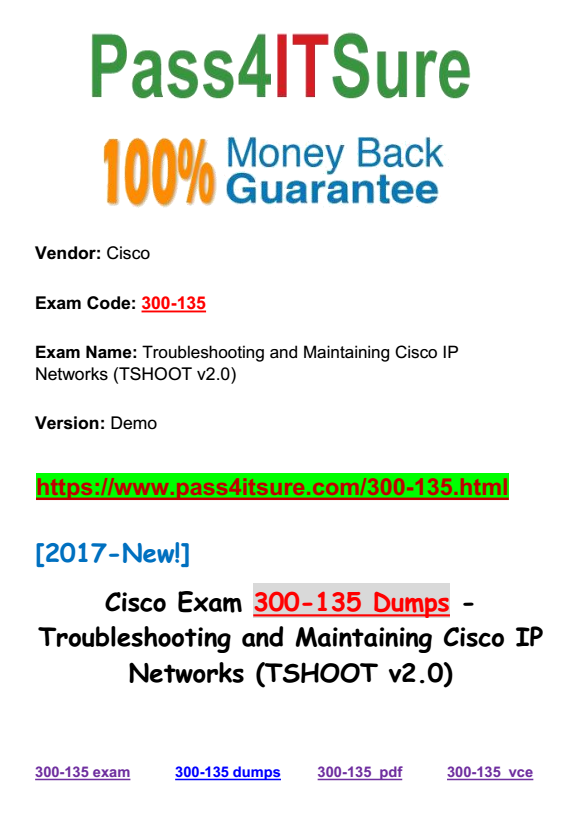
Question Set 1
QUESTION 1
A customer network engineer has made configuration changes that have resulted in some loss of connectivity. You have been called in to evaluate a switch network and suggest resolutions to the 300-135 exam problems. 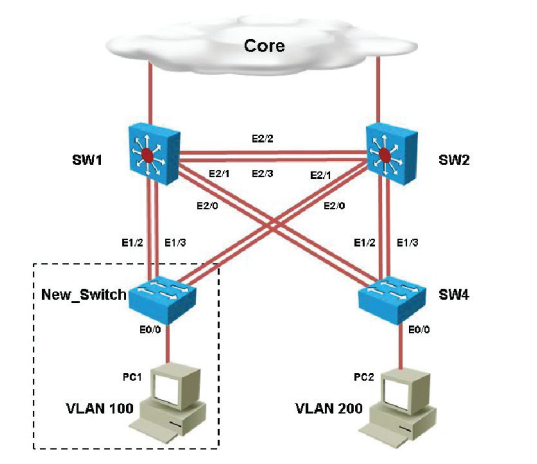
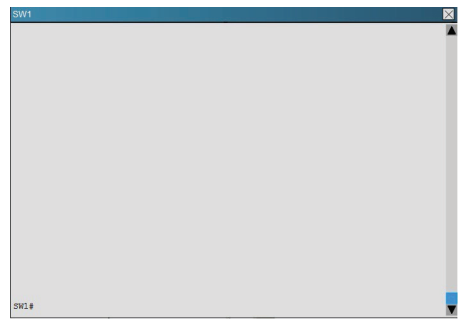
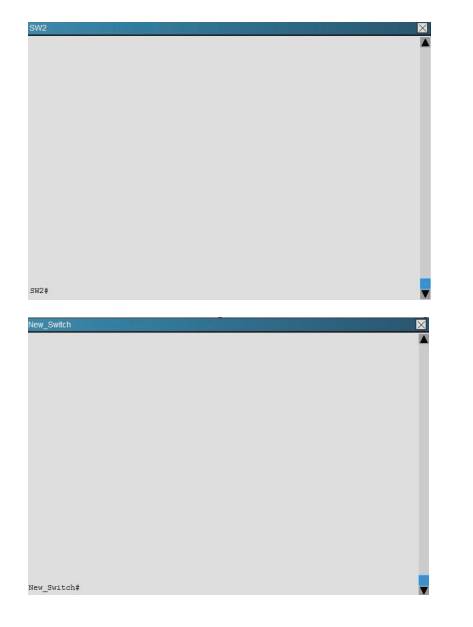
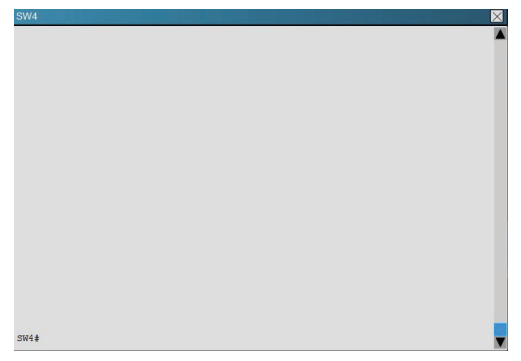
PC2 in VLAN 200 is unable to ping the gateway address 172.16.200.1; identify the issue.
A. VTP domain name mismatch on SW4
B. VLAN 200 not configured on SW1
C. VLAN 200 not configured on SW2
D. VLAN 200 not configured on SW4
Correct Answer: C
Explanation
Explanation/Reference:
Explanation:
By looking at the configuration for SW2, we see that it is missing VLAN 200, and the “switchport access vlan 200” command is missing under interface eth 0/0:
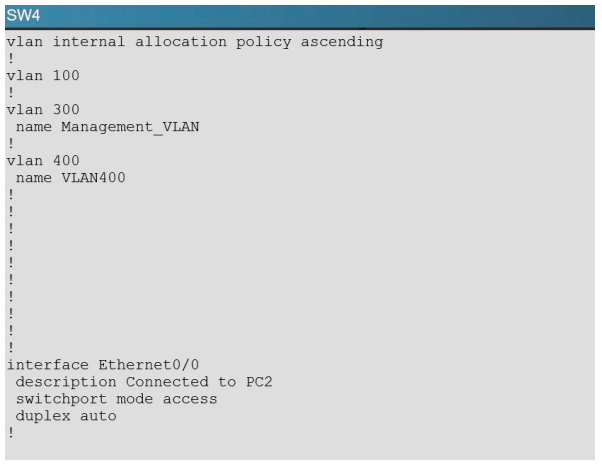
QUESTION 2
A customer network engineer has made configuration changes that have resulted in some loss of connectivity. You have been called in to evaluate a switch network and suggest resolutions to the problems.
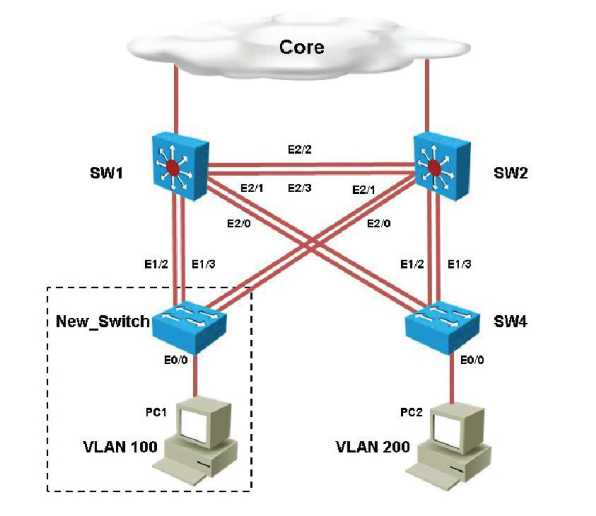
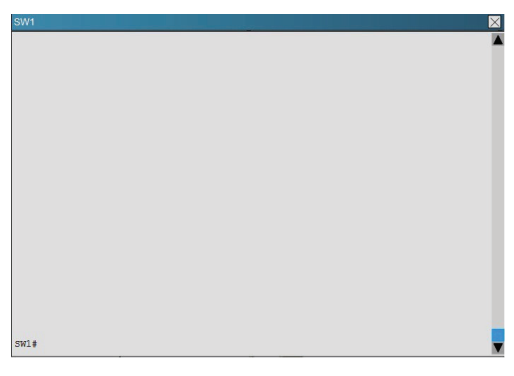
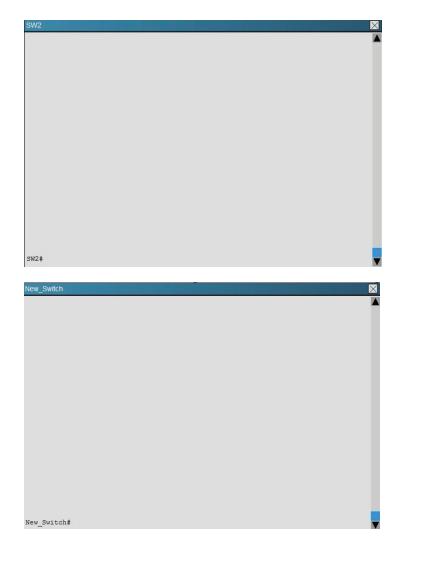
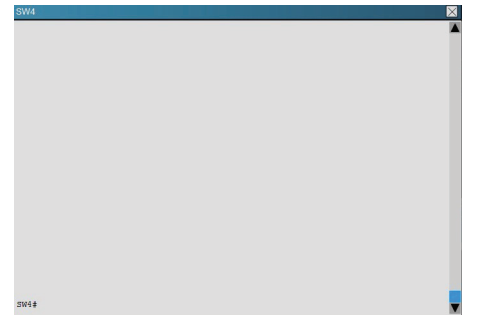
Which of statement is true regarding STP issue identified with switches in the given topology?
A. Loopguard configured on the New_Switch places the ports in loop inconsistent state
B. Rootguard configured on SW1 places the ports in root inconsistent state
C. Bpduguard configured on the New_Switch places the access ports in error-disable
D. Rootguard configured on SW2 places the ports in root inconsistent state
Correct Answer: A
Explanation
Explanation/Reference:
Explanation:
On the new switch, we see that loopguard has been configured with the “spanning-tree guard loop” command.
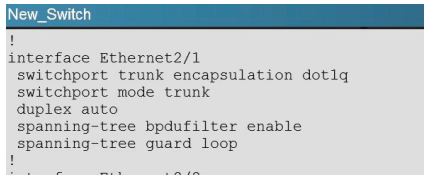
The loop guard feature makes additional checks. If BPDUs are not received on a non-designated port, and loop guard is enabled, that port is moved into the STP
loop-inconsistent blocking state, instead of the listening / learning / forwarding state. Without the loop guard feature, the port assumes the designated port role.
The port moves to the STP forwarding state and creates a loop.
QUESTION 3
A customer network engineer has made configuration changes that have resulted in some loss of connectivity. You have been called in to evaluate a switch network and suggest resolutions to the problems.
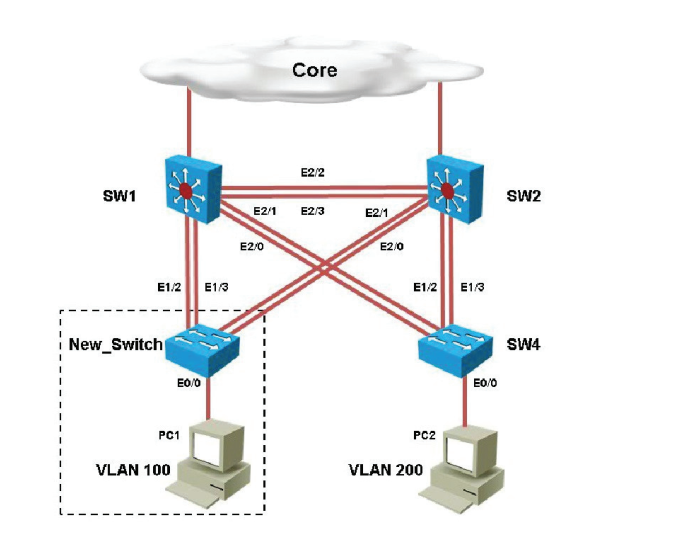
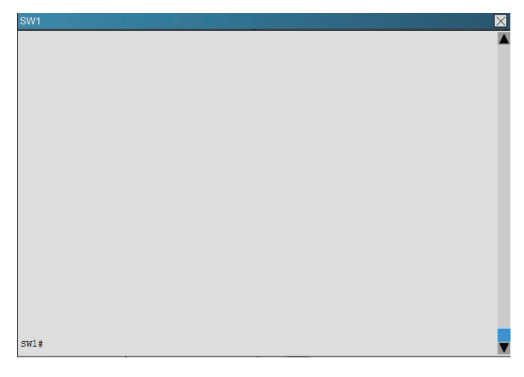
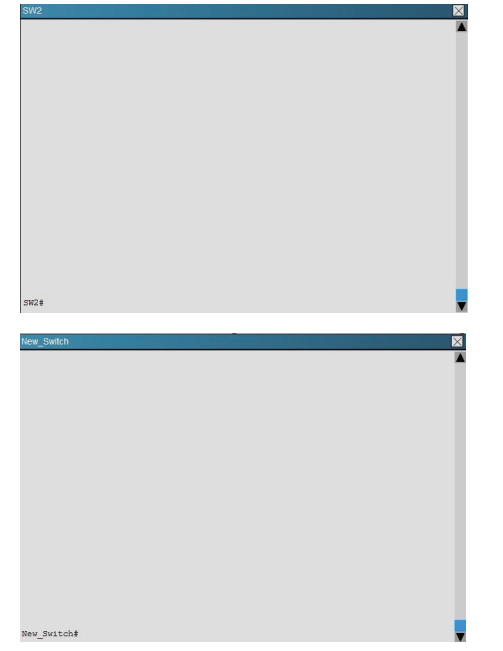
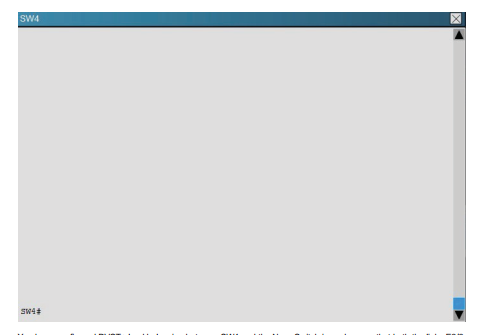
You have configured 300-135 dumps PVST+ load balancing between SW1 and the New_Switch in such a way that both the links E2/2 and E2/3 are utilized for traffic flow, which component of the configuration is preventing PVST+ load balancing between SW1 and SW2 links
A. Port priority configuration on SW1
B. Port priority configuration on the New_Switch
C. Path cost configuration on SW1
D. Path cost configuration on the New_Switch
Correct Answer: D
Explanation
Explanation/Reference:
Explanation:
Here is the configuration found on the New_Switch:

This causes the port cost for link eth 1/3 to increase the path cost to 250 for all VLANs, making that link less preferred so that only eth 1/2 will be used.
QUESTION NO: 4
What will happen when you attempt to compile and run the code below, assuming that you enter
the following sequence: 1 2 3 end<enter>?
#include <iostream>
#include <string>
#include <list>
#include <algorithm>
using namespace std;
template<class T>struct Out {
ostream & out;
Out(ostream & o): out(o){}
void operator() (const T & val ) {out<<val<<” “; } };
int main ()
{
list<int> l;
for( ; !cin.bad() ; )
{
int i;
cin>>i;
l.push_back(i);
}
for_each(l.begin(), l.end(), Out<int>(cout));
return 0;
}
Program will output:
A. 1 2 3
B. 1 2 3 end
C. 1
D. compilation error
E. program runs forever without output
Answer: E
QUESTION NO: 5
What happens when you attempt to compile and run the following code?
#include <iostream>
#include <set>
#include <vector>
using namespace std;
template<class T> void print(T start, T end) {
while (start != end) {
std::cout << *start << ” “; start++;
}
}
int main(){
vector<int>v;
multiset<int> s;
for(int i=10; i>0; i??) {
v.push_back(i); s.push_back(i);
}
print(v.begin(), v.end()); print(s.begin(), s.end());cout<<endl;
return 0;
}
A. program outputs: 10 9 8 7 6 5 4 3 2 1 1 2 3 4 5 6 7 8 9 10
B. program outputs: 10 9 8 7 6 5 4 3 2 1 10 9 8 7 6 5 4 3 2 1
C. program outputs: 10 9 8 7 6 5 4 3 2 1 and unpredictable sequence of numbers range 1 to 10
D. compilation error
300-135 pdf Answer: D
QUESTION NO: 6
What happens when you attempt to compile and run the following code?
#include <iostream>
#include <map>
using namespace std;
int main() {
int t[] = { 1, 1, 2, 2, 3, 3, 4, 4, 5, 5 };
string s[] = { “one”, “one”, “two”, “two”, “three”,”three”, “four”, “four”, “five”, “five”};
map<int, string> m;
for (int i = 0; i < 10; i++) {
m.push_back(pair<int, string>(t[i], s[i]));
}
for (map<int, string>::iterator i = m.begin(); i != m.end(); i++) {
cout << i?>first << ” “;
}
return 0;
}
A. program outputs: 1 2 3 4 5
B. compilation error
C. program outputs: 1 1 2 2 3 3 4 4 5 5
D. program outputs: one two three four five
E. program outputs: one one two two three three four four five five
Answer: B
QUESTION NO: 7
What happens when you attempt to compile and run the following code?
#include <deque>
#include <iostream>
#include <algorithm>
using namespace std;
class B { int val;
public:
B(int v):val(v){}
int getV() const {return val;} bool operator < (const B & v) const { return val<v.val;} };
ostream & operator <<(ostream & out, const B & v) { out<<v.getV(); return out;}
template<class T>struct Out {
ostream & out;
Out(ostream & o): out(o){}
void operator() (const T & val ) { out<<val<<” “; } };
int main() {
int t[]={8, 10, 5, 1, 4, 6, 2, 7, 9, 3};
deque<B> d1(t, t+10);
sort(d1.begin(), d1.end());
deque<B>::iterator it = upper_bound(d1.begin(), d1.end(), B(4), greater<B>());
for_each(it, d1.end(), Out<B>(cout)); cout<<endl;
return 0;
}
Program outputs:
A. 5 6 7 8 9 10
B. 4 5 6 7 8 9 10
C. compilation error
D. 1 2 3 4 5
E. 1 2 3 4
300-135 vce Answer: C
QUESTION NO: 8
Which stack initialization (line numbers) are correct? Choose all that apply.
#include <iostream>
#include <deque>
#include <list>
#include <stack>
#include <vector>
using namespace std;
int main()
{
deque<int> mydeck;
list<int> mylist;
vector<int> myvector;
stack<int> first;// Line I
stack<int> second(mydeck);// Line II
stack<int> third(second);// Line III
stack<int, list<int> > fourth(mylist);// Line IV
stack<int, vector<int> > fifth(myvector);// Line V
return 0;
}
A. line I
B. line II
C. line III
D. line IV
E. line V
Answer: A,B,C,D,E
QUESTION NO: 9
What happens when you attempt to compile and run the following code?
#include <deque>
#include <iostream>
#include <algorithm>
using namespace std;
class B { int val;
public:
B(int v):val(v){}
int getV() const {return val;} bool operator < (const B & v) const { return val<v.val;} };
ostream & operator <<(ostream & out, const B & v) { out<<v.getV(); return out;}
template<class T>struct Out {
ostream & out;
Out(ostream & o): out(o){}
void operator() (const T & val ) { out<<val<<” “; } };
int main() {
int t[]={8, 10, 5, 1, 4, 6, 2, 7, 9, 3};
deque<B> d1(t, t+10);
sort(d1.begin(), d1.end());
deque<B>::iterator it = upper_bound(d1.begin(), d1.end(), B(4));
for_each(it, d1.end(), Out<B>(cout)); cout<<endl;
return 0;
}
Program outputs:
A. 5 6 7 8 9 10
B. 4 5 6 7 8 9 10
C. 6 7 8 9 10
D. 1 2 3 4 5
E. 1 2 3 4
300-135 exam Answer: A
Other related topics may also appear on any specific version of the Cisco 300-135 dumps exam. To better reflect the contents of the exam and for clarity, the following guidelines may change at any time without notice. Cisco 300-135 dumps exam information: https://www.pass4itsure.com/300-135.html